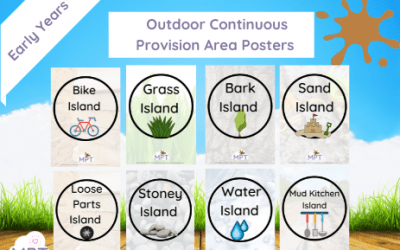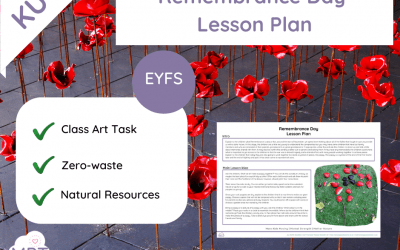Take learning outside with our All About Me Outdoor Learning Lesson Pack – a complete, ready-to-use resource designed...
10 Outdoor Valentines Day Lesson Ideas
May 4, 2025
10 Outdoor Valentine’s Day Lesson Ideas Celebrate kindness, connection, and creativity – the muddy way Bring the...
10 Outdoor Ideas for VE Day – EYFS
May 4, 2025
10 Outdoor Ideas for VE Day – EYFS Celebrate VE Day the muddy way! This unique collection of 10 Outdoor Ideas for VE...
Dinosaur Continuous Provision Plan (Early Years Outdoors)
Nov 8, 2024
Product Description: Continuous Provision Plan for Early Years Outdoors:...
Rainy Day Ideas Early Years – Confidence Theme (Rope Method)
Nov 7, 2024
Rainy Day Ideas for Early Years - Confidence Theme (Rope Method) Using the Muddy Puddle Teacher Approach Turn rainy...
Fireworks Ideas for EYFS
Nov 4, 2024
Fireworks Ideas for EYFS Using the Muddy Puddle Teacher (MPT) Approach: Nature-Inspired, Eco-Friendly, and Fun!...
Muddy Kitchen (Themed Posters)
Mar 18, 2022
Try some of our resources for Free. Sign up to our free outdoor learning membership here.
Outdoor Continuous Provision Area Posters
Mar 18, 2022
Wow! Let us help you organise your outdoor area with these amazing downloadable posters. Laminate and display outside...
Remembrance Day (Lesson Plan EYFS)
Nov 9, 2021
Remembrance Day (Lesson Plan EYFS) ⇒Use Remembrance Day (Lesson Plan EYFS) to take your children outside and allow...
Celebrating Diwali
Aug 20, 2021
Celebrating Diwali ⇒This lesson is best done outside and involves some messy...
Set Up a Nature Club
Apr 19, 2021
Always wanted to set up an afterschool nature club? Well, this pack will help you! It gives you all the tips you need,...
*FREE* Daily Outdoor Challenges EYFS | Nature Theme
Jan 18, 2021
Daily Outdoor Challenges EYFS Nature Theme! Let the Muddy Puddle Teachers help you with the lockdown and get free...
EYFS Trolls
Jan 6, 2021
EYFS Trolls Use Trolls EYFS to take positive power outside loud and proud! Time to shine 🙂 Like our Muddy ideas?...
EYFS All About Me
Jan 6, 2021
Exploring the "All About Me" Topic in Early Years Education The "All About Me" topic is a fundamental theme in early...
EY Easter Story
Jan 6, 2021
Early Years Easter Story In a nutshell: Taking the Easter Story outside may be just the inspiration you need to put an...
Early Years World Book Day
Jan 6, 2021
Early Years World Book Day In a nutshell: Use Muddy World Book Day Ideas pack to get activities and learning outside....
Gardening Therapy
Jan 6, 2021
Gardening Therapy Use Gardening Therapy to help the therapeutic magic of nature calm emotions and strengthen...
Nativity Ideas Pack (Take it Outside!)
Dec 9, 2020
Use Nativity ideas pack to use natural resources and take the learning of this area outside. There is something...
New In

Forest School Story-Linked Lesson Ideas

Whirlpool Lesson Ideas – SEND Pack

Tornado Lesson Pack for SEND

All About Me Lesson Ideas

Lunar New Year Outdoor Arts Pack

Bottle Greenhouse Instructions

Blank Outdoor Lanyard Template

Outdoor Learning Assessment Grid

Nelson Mandela KS1 (Outdoor Lesson Ideas)




















